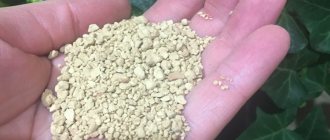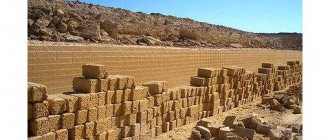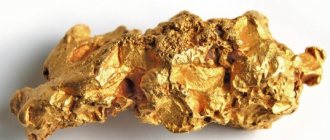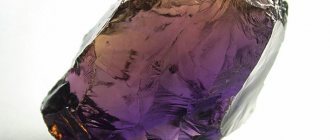Spring is considered an ideal time for detox, the main goal of which is to get rid of biological junk, prepare the body for the transition from spring to summer, improve the functioning of the body and saturate it with useful substances. These criteria are met by one mega-remedy, which appeared in glossy magazines as a new German detox supplement - Mega NFC 10 zeolite, costing 22 thousand rubles for a monthly course. I quote an excerpt from the gloss:
“As we age, our cells suffer from oxidation, like a cut avocado,” says London doctor Mosaraf Ali, who is responsible for the good health of Prince Charles, Samuel L. Jackson and Kate Moss. “Mega NFC 10 solves this problem—I’ve been using it myself for a year now.” Ali's clients, as well as athletes, workaholics and fans of detox courses, have already exchanged a handful of multivitamins and fish oil capsules for one packet of miracle powder a day. The new product contains a multi-material zeolite mineral from Norwegian volcanic lava, which slows down the aging process. A month-long course fine-tunes the body’s functioning like an experienced piano tuner: removes toxins, improves digestion, sleep, skin and hair condition, relieves stress and improves immunity. And one morning dose eliminates the memory of a couple of extra lychee martinis knocked back the day before...
Mosaraf Ali
I became interested in what kind of miracle and panacea this is, after studying the manufacturer’s website, it turned out that the dietary supplement Mega NFC 10 contains only powder of the natural mineral zeolite (clinoptilolite) . I checked iherb and amazon and found several forms of it at quite affordable prices - a maximum of $50, instead of $300. I have no doubt about the effectiveness of this modern enterosorbent, which is capable of removing heavy metals and radiation from the body, but not at the same price as glossy magazines offer.
Who discovered it and how?
The description of the unique stone was first compiled in the middle of the 18th century. In 1756, the famous Swedish mineralogist and chemist Axel Frederik Cronstedt observed the results of a curious laboratory test. By heating the mineral stilbite, the scientist discovered that it increased in volume and swelled. This releases water, which boils and creates bubbles. This is where the term “zeolite” came from, which from Greek means “ boiling stone ” (“zeo” - boil, “lithos” - stone).
For a long time no one knew how to use the discovery. Therefore, for 200 years the results of the experiment were only a theory. The 1950s brought an urgent challenge to water purification. Scientists working on this problem decided to test the properties of zeolite. It turned out that the mineral has absorbing properties and is able to reduce the presence of calcium salts in water . This is how the stone found practical use.
Axel Frederic Kronstedt
Description and types of zeolite
Zeolite is a natural aluminosilicate. Its sedimentary-volcanic origin suggests that it is formed due to the crystallization of a mineral-lava mixture found in salt water. In appearance, it is a small light stone with a greenish, grayish or brownish tint. It can be matte or with a pearlescent tint.
The openwork, loose crystalline structure of the mineral resembles a honeycomb. It consists of channels that are filled with various elements. The composition includes water (approximately 10%) and about 84 chemical elements :
- silicon (70–75%);
- aluminum (10–15%);
- potassium;
- calcium;
- magnesium;
- sodium;
- iron;
- manganese;
- titanium;
- impurities of copper, lead, cobalt, zinc, vanadium, etc.
50 varieties of zeolite in the natural environment . The most widespread minerals from this group are: analcime, harmotome, heulandite, clinoptilolite, mordenite, natrolite, scolecite, stilbite, ferrierite, phyllylaite, erionite.
Clinoptilolite
Price
Zeolite has a wide price range. The cheapest are artificial samples used in industry. Their cost starts from $0.6 per 1 kg. Unprocessed stones of natural origin can be purchased for $9-10 per 1 kg. A piece of jewelry with this mineral, framed in a jewelry alloy, will cost approximately the same.
Natural collection quality zeolites cost between $9-11 per copy. The price of unusual large specimens starts from $20 for 1 piece and above.
Unique properties of the mineral
The demand for the stone is due to its beneficial properties :
- Sorption is the ability to absorb toxic substances and compounds: nitrates, oils, toxins, heavy metals, pesticides, allergens. But the mineral does not remove useful substances. Vitamins, minerals, and other large compounds do not fit into the channels of the crystal lattice.
- Ion exchange is a reaction in which 2 compounds exchange ions, resulting in 2 new substances. Zeolite contains many useful elements that are attached to it by weak bonds. It easily gives these elements to the compounds that need them. The porous structure allows the sponge mineral to absorb water to 1/2 of its own volume.
- Catalysis is a change in the rate of a reaction. This quality is in demand by the oil refining industry.
- Resistance to acid and temperature influences.
Mold fighter
Zeolite is an excellent sorbent . Its structure ensures the absorption of excess water, excess moisture, and dehumidification of air. This property allows the mineral to be used for drying damp rooms, musty basements, and attics. In the fight against mold, stone is superior even to aluminum and calcium silicates. It prevents the appearance of fungi.
Good catalyst
The ability to accelerate certain chemical reactions makes the mineral especially valuable in the chemical industry. For example, the stone is used in the distillation and cracking (i.e., splitting) of oil.
Chemical composition
Despite the fact that the total number of elements involved in these compounds is small, we have a very significant number of mineral species that differ from each other not so much in water content as in the ratio of cations to each other, which often do not fit into simple chemical formulas. The general chemical formula can be expressed as follows: AtChrO2p · nH2O, where X = Si, Al. There are no definite relationships between the content of alkalis and silica in various minerals.
Chemically, zeolites are characterized by a gradual replacement of silicon with aluminum with a change in the Al:Si ratio from 1:5 to 1:1; the ratio of the sum of oxides of mono- and divalent elements to alumina remains constant: (RJ, R2+)0 : A1203 = 1:1. As is clearly seen from the formulas below, the chemical differentiation of zeolites is related to the SiO2:Al2O3 ratio and water content; some of these minerals differ only in the latter characteristic.
Isomorphism is possible as in the group of feldspars: NaSi CaAl, KSi BaAl, and in addition also between Ca Na2, Ba K2. Miscibility, however, appears to be limited, at least for minerals with higher Al:Si ratios, which also have higher lattice energies. This is clearly demonstrated by the example of mordenite, for which a perfect series is known between the sodium member Na2Al2Si3O10 *7H2O and the calcium member CaAl2Si3O10*7H2O, on the one hand, and the mesolithic Ca2Na2[Al2Si3Oi0]3*8H2O, which is a well-defined member between the scolecite CaAl2Si3Oi0 *3H2O and its sodium analog natrolite Na2Al2Si3O10 *2H2O, on the other.
Zeolite mining sites
The mineral extraction process has been established everywhere. Approximately 1000 large deposits . The largest Russian deposits are based in the Urals, in the Kemerovo, Sakhalin regions, Krasnoyarsk and Khabarovsk territories, and Chukotka Autonomous Okrug. There are deposits in America (USA), Japan, East African countries, Iceland, and New Zealand.
Zeolite extraction
The process of extraction from the ground is simple: the rock lies shallow. Difficulties arise during processing, separation, and sorting of crystals.
Areas of application
Zeolite is widely used in various areas of human activity:
- industries;
- agriculture;
- construction;
- medicine;
- everyday life
Industry
The special qualities of the mineral make it possible to use zeolite in many industries , which is reflected in the table.
Agriculture
| Industry | Application |
| Chemical | acceleration of chemical reactions; prolongation of the action of chemical reagents; filtration; drying of moisture, gases, etc. |
| Petrochemical | removal of sulfur, salts, and water particles from oil; use in the form of a catalyst-accelerator in petroleum distillation |
| Gas | gas drying |
| Nuclear | capture and retention of radionuclides; use as a filter and adsorbent |
| Pulp and paper | use as a raw material for the production of high-quality thick paper, synthetic leather, packaging material for storing fruits |
| Energy | purification and regeneration of energy oils; water preparation for boilers and water heaters |
| Food | cleaning, filtration of food liquids; elimination of health-damaging, toxic substances from food production components; use for canning and as a healthy food additive |
| Light | textile manufacturing, filling fabric weaves |
Zeolite based fertilizer
is effectively used for agricultural purposes :
- In plant growing: gardening, floriculture, growing vegetables and cereals. The stone enriches the soil with microelements, makes the soil more porous, and helps the root system develop. Zeolite does not allow the soil to dry out too much and retains life-giving moisture so that it does not seep deeper. Zeolite fertilizing and mineral fertilizers provide a sharp increase in yield by 50%. Increases resistance to diseases and pests. Zeolite is used for both outdoor and indoor plants.
- In animal husbandry. The inclusion of the mineral in mixed feed helps strengthen the immune system, better absorption of nutrients, growth, strengthening of the skeleton, and weight gain of the animal. The quantity and quality of products increases: milk yield increases, eggshells become stronger. The mineral is added to livestock bedding: it removes moisture and odors.
- In fish farming. Zeolite filters water well, removes ammonia salts, nitrogenous substances, bacteria, viruses that are harmful to fish. Natural material is included in feeding, which ensures good survival rate, fish growth, and savings in feed mixtures.
Construction
In construction, stone is used to create lightweight and fire-resistant partitions . With the addition of zeolite, concrete becomes many times stronger, and the process of hardening goes faster.
Environmental protection
Natural stone is used for environmental purposes:
- cleans contaminated water bodies and soil from heavy metals, radionuclides, chemicals (for example, after serious accidents of tankers and oil pipelines);
- filters wastewater from non-ferrous and radioactive metals, chlorine;
- traps harmful gases: ammonia, nitrogen, hydrogen sulfide, carbon.
Zeolite for water purification
How to use zeolite at home
The mineral is successfully used in solving everyday problems:
- Bulk zeolite is combined with laundry detergent to soften tap water.
- Clinoptilolite mineral granules are mixed with aquarium gravel or placed inside a filter to purify the water and reduce ammonia.
- Zeolite granules are placed in the smoking room, toilet, bathroom, kitchen, cellar, pantry, closet, refrigerator, trash bin to prevent and eliminate unpleasant odors and moisture.
- The bulk mineral is mixed with litter for pet trays and eliminates the ammonia odor.
- A bag of powdered or granular contents is placed inside the shoe to ensure it is thoroughly dried.
Livestock
Natural zeolite has also found application in the field of livestock farming. It is used as a feed mineral additive. It allows you to strengthen the immune system, normalize metabolism, and prevent the gastrointestinal tract. The miner makes it possible to make offspring healthier. The coat becomes shiny, the animal grows better and gains strength. At the same time, the body's protective abilities are restored.
Thanks to zeolite:
- The nutritional properties of the feed are improved.
- Digestion processes improve.
- The absorption of useful elements increases.
- The physiological condition of the animal improves.
- The lifespan of the animal increases.
- A number of diseases are prevented.
- Productivity increases in adult animals.
- Toxins are removed from the body.
The mineral allows you to improve a number of indicators:
- In cows: milk yield up to 8% per day, safety of newborns by 10%, increase in live weight in young animals - up to 18%.
- In sheep: wool shearing increases to 13%, strength increases to 12%, prolificacy - by 11%, live weight of offspring - up to 14%.
- Pigs: safety of offspring - up to 18%, productivity of young individuals - up to 10%.
According to research, it has been noted that zeolite stabilizes the nutritional processes of young animals and increases overall acidity. It is also noticed that the bones become denser.
Artificial zeolite
Not only natural zeolite, but also synthetic zeolite is successfully used for technological processes. The latter is produced through laboratory manipulations. Organic components, water, silicon, aluminum, alkalis are loaded into a capacious container. The mixture is heated to 180–185 degrees. The process ends with crystallization.
The artificial analogue completely duplicates all the properties of natural stone. Scientists have developed about 150 varieties of synthetic mineral. They are used in petrochemicals, construction, and water treatment.
Synthetic zeolite
Therapeutic effects, medical use
The enormous benefits of zeolite for human health are undeniable. The mineral is used as a preventive, immunostrengthening, immunomodulatory agent that normalizes the functioning of all body systems . The stone eliminates toxins and prevents many diseases. It is used to produce cosmetics that have a rejuvenating effect: masks, scrubs, etc.
What diseases does it help with?
The drug has proven itself well for existing health problems:
- bronchitis;
- sinusitis;
- pyelonephritis;
- disorder in the functioning of the cardiovascular system, anemia;
- problems with the digestive system: ulcers, gastritis, liver diseases;
- diseases of the musculoskeletal system;
- diabetes;
- allergy;
- psoriasis and dermatitis;
- healing of wounds, burns;
- food poisoning.
There are drugs that are used even in the treatment of radiation sickness and cancer.
The biologically active additive “Litovit” is prepared on the basis of the mineral. It is presented in the form of powders, tablets, drops, granules, which are allowed to be used after consultation with a doctor.
Litovit
How to use the stone
Recommendations for use:
- Wearing mineral jewelry (beads, bracelets) helps relieve headaches, normalizes blood pressure, and treats chronic diseases.
- To relieve any unpleasant symptom, a separate pebble can be heated, dipped in hot water, and applied to the problem area.
- Mineral baths are very effective for varicose veins, fungal infections, and swelling. To prepare the decoction, use 100 g of powder per 2 liters of warm water.
- To improve the health of the body, take water purified with zeolite. For 3 liters of water you will need a small handful of granules. The stones are lowered into water and kept for 12 hours. After this, the liquid can be filtered and consumed.
- The healing mineral can be used repeatedly. To do this, it must be washed regularly and dried outdoors in direct sunlight.
Zeolite jewelry
Advice from experienced flower growers
Zeolite can be purchased as a ready-made substrate and cat litter component. The latter are cheaper and can also be used for plants. But before use, toilet filler must be rinsed.
Zeolite of small and medium fractions is very convenient in hydroponics - a method of growing plants in artificial media. It is often used in indoor floriculture for succulents.
- unlike gravel, it is porous and retains moisture;
- unlike pumice, brick chips and lechuza, it does not crumble over time and does not dust (or silt) the bottom of the pot;
- unlike vermiculite and perlite, it is not very light, so it does not spread from wind and draft and does not float when watering.
Leaf succulents and cacti feel great in zeolite and, under all other identical conditions, develop better than in organic matter.
Zeolite is an ideal substrate for orchids and violets. Moreover, it can be used in various ways:
- as a mulching and decorative material;
- as an additive to the base soil in volumes from 20 to 90%;
- as the main substrate.
Reviews for orchids are only positive: the roots grow 2-3 times more intensely than on ordinary soil or bark, the frequency of watering is reduced, the plants almost do not get sick, since their resistance to stress increases due to the silicon present in the substrate. Opinions differ about growing violets on zeolite, but mainly due to the fact that some gardeners have a fundamentally negative attitude towards growing flowers on any gravel.
Watercress or bedbug can be grown on a windowsill without any hassle, using zeolite as a substrate. This healthy, micronutrient-rich, unpretentious green vegetable crop does not require feeding. To get a rich harvest of watercress, you only need to water it occasionally, and everything else will come from the substrate.
Ocean zeolite is not suitable for plants - it dissolves. Therefore, if the packaging says volcanic mineral rock zeolite, as well as the word “oceanic” or “zeolite-containing clay, large granules,” do not buy it for plants.











